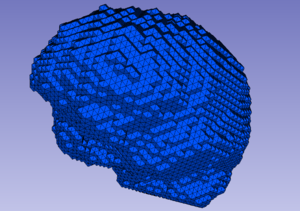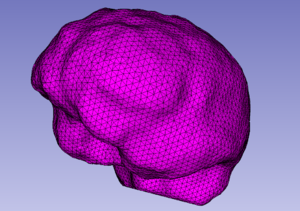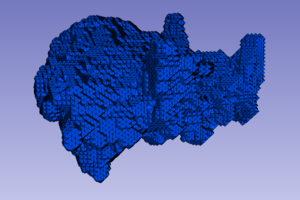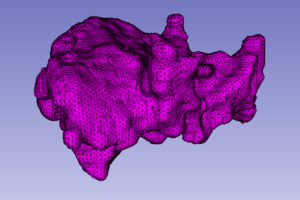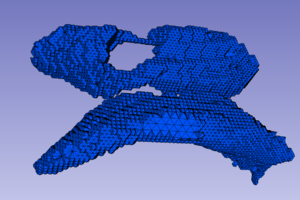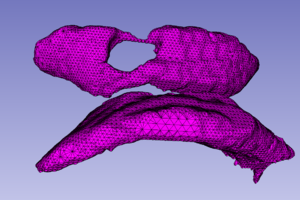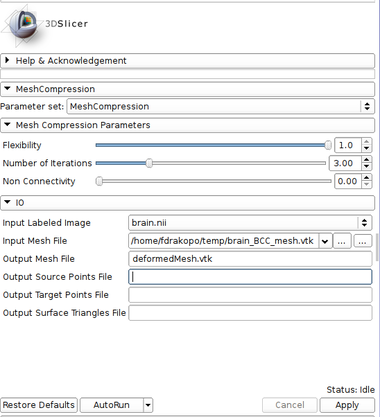Difference between revisions of "Documentation/Nightly/Modules/MeshCompression"
| Line 55: | Line 55: | ||
{| | {| | ||
| | | | ||
| − | * '''Mesh | + | * '''Mesh Compression Parameters:''' |
| − | ** ''' | + | ** '''Flexibility:''' Controls the trade-off between the regularization energy defined by the stress energy of a linear bio-mechanical elastic model, and the similarity energy. Value should be between [0.1,1] (default: 1). |
| − | ** ''' | + | ** '''Number of Iterations:''' Controls the number of iterations for the compressor. The larger the value the closer the boundaries of the input mesh to the boundaries of the input image. A large number of iterations might cause distorted poor-quality elements. Value should be between [1,10] (default: 3). |
| − | ** ''' | + | ** '''Non Connectivity:''' Controls the density of the extracted target points via a prohibited connectivity between adjacent blocks of voxels. The larger the value the denser the target point set. 0 is vertex non-connectivity (26 neighbors), 1 is edge non-connectivity (18 neighbors), 2 is face non-connectivity (6 neighbors) and 3 is no non-connectivity. Value should be 0 or 1 or 2 or 3. (default: 0). |
* '''Input/Output:''' | * '''Input/Output:''' | ||
** '''Labeled Image:''' The input labeled image. | ** '''Labeled Image:''' The input labeled image. | ||
Revision as of 03:25, 20 June 2014
Home < Documentation < Nightly < Modules < MeshCompression
|
For the latest Slicer documentation, visit the read-the-docs. |
Introduction and Acknowledgements
|
Extension: Image To Mesh Conversion
Author:Fotis Drakopoulos | |||
|
Module Description
The Mesh Compression (MC) module deforms the input tetrahedral mesh towards the boundaries of the input labeled image. Two point sets are extracted for the mesh deformation. The first (source point set) consists of the surface vertices in the input mesh. The second (target point set) consists of the surface edge points in the input labeled image. After the extraction of the two point sets, the input mesh is deformed by registering the source to the target point set using a Physics-Based Non-Rigid Registration method. The current version of the module supports a single-tissue labeled image and mesh.
Use Cases
Tutorials
N/A
Panels and their use
|
Similar Modules
N/A
References
- Yixun Liu, Panagiotis Foteinos, Andrey Chernikov and Nikos Chrisochoides, "Mesh Deformation-based Multi-tissue Mesh Generation for Brain Images", Engineering with Computers, Volume 28, pages 305-318, 2012.
Information for Developers
| Section under construction. |

